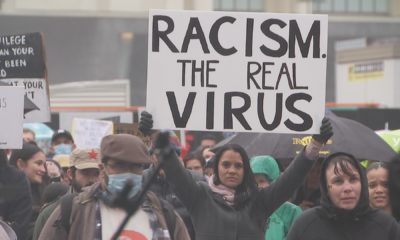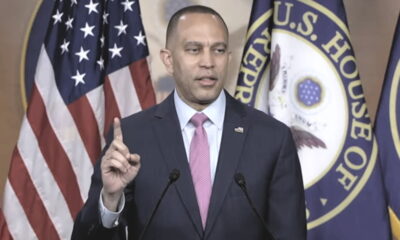'A LITTLE RACIST'
U.S. Students Aren’t Being Taught About This Pivotal Era of Black History, Study Shows

A new report has found that U.S. students aren’t adequately taught about the Reconstruction Era, the period from 1865 to 1877 in which white supremacists undermined efforts to reintegrate former Black slaves into the post-Civil War United States. As a result, many students remain ignorant about the period and its connection to the present-day fight for racial justice.
The report, released by the Zinn Education Project, found that numerous U.S. school teachers quickly summarize, skip, or minimize lessons from the era over fears that it might upset parents angry over “indoctrination” or “critical race theory.”
Numerous schools teach Reconstruction from a top-down approach as a story about how congressional and presidential actions transformed the nation to a post-slavery period. This approach leaves out how these actions actually played out locally and in the lives of everyday Black people.
For example, while the nation established the Freedman’s Bureau to help assist former slaves after emancipation, history classes seldom mention how understaffed, ineffective, and terrorized bureau offices often were. Current history lessons also fail to explain the specific white supremacist individuals, organizations, and systems that actively worked to defeat Reconstruction.
Reconstruction teaching also focuses broadly and passively on the period’s “successes and failures” rather than directly showing how white supremacist groups helped dismantle and pass Jim Crow laws to destroy Black voting, officeholding, and economic independence.
This approach also ignores how Black and anti-racist progressives fought against white supremacy. The “successes and failure” framing additionally equates white supremacy as being equal to racial justice advocacy, when a more accurate portrayal would reflect on Reconstruction’s revolutionary advocates and the endurance of white supremacy.
Current school lessons often teach Reconstruction as a purely southern event that happened in former slave-owning states, neglecting the fact that the era was a national effort that also transformed northern states. Many states don’t even require any teaching of Reconstruction at all in order for students to pass standardized history exams.
To understand the impact this has on the current day, consider what ACLU communications strategist Rotimi Adeoye recently wrote in The Daily Beast.
“Many Americans have long believed in the dangerous theory that when the federal government acts to help minorities, it’s all just part of a covert plan for Black racial supremacy,” Adeoye wrote. “This racist and violent ideology is still being proliferated by Fox News pundit Tucker Carlson, and was present in the Buffalo shooter’s alleged manifesto.”
“And if you look back at the attack on the Capitol on Jan. 6—where an insurrectionist waved a confederate battle flag in the U.S. Capitol for the first time in American history—Eric Foner, one of America’s leading history experts observed that it reminded him of ‘the overthrow of Reconstruction, which was often accompanied, or accomplished, I should say, by violent assaults on elected officials,'” Adeoye added.
School teachers need to be given more support and instruction on how to cover this period and the many aims that Black people fought for autonomously during Reconstruction, the study’s authors write. This latter group includes Black people who got busy “founding Black churches and mutual aid societies, finding loved ones separated in slavery, and formalizing partnerships were all actions rooted in care, justice, and opportunity.”
By teaching a more nuanced and fuller version of Black life during this period, it will also lay the groundwork for the Harlem Renaissance, the blossoming of Black art and culture around the U.S., and the ongoing fight for racial justice that continued through the early 20th century into the Civil Rights Era of the 1950s and ’60s and through the modern day, the study’s authors say.
Enjoy this piece?
… then let us make a small request. The New Civil Rights Movement depends on readers like you to meet our ongoing expenses and continue producing quality progressive journalism. Three Silicon Valley giants consume 70 percent of all online advertising dollars, so we need your help to continue doing what we do.
NCRM is independent. You won’t find mainstream media bias here. From unflinching coverage of religious extremism, to spotlighting efforts to roll back our rights, NCRM continues to speak truth to power. America needs independent voices like NCRM to be sure no one is forgotten.
Every reader contribution, whatever the amount, makes a tremendous difference. Help ensure NCRM remains independent long into the future. Support progressive journalism with a one-time contribution to NCRM, or click here to become a subscriber. Thank you. Click here to donate by check.
 |



























